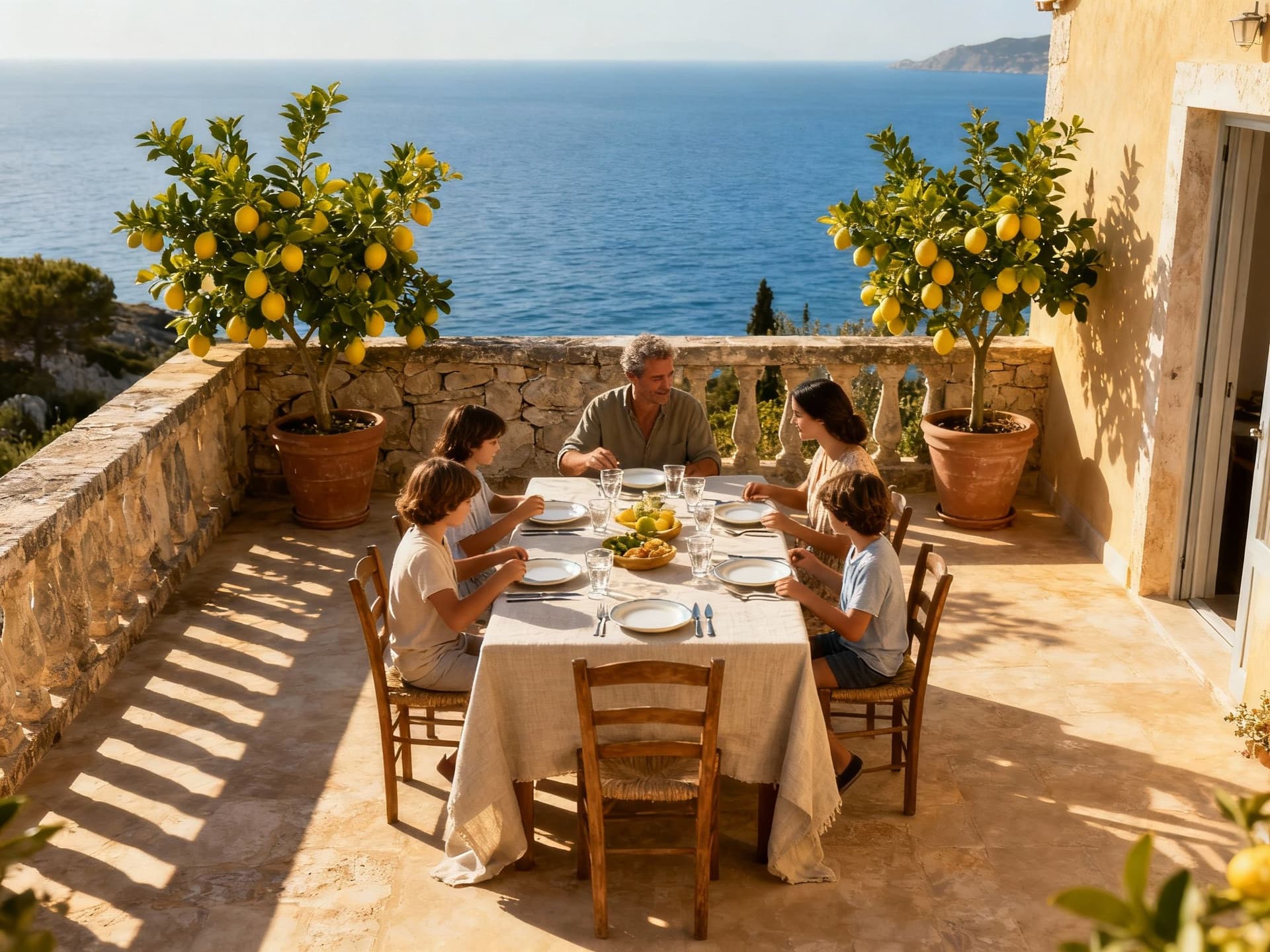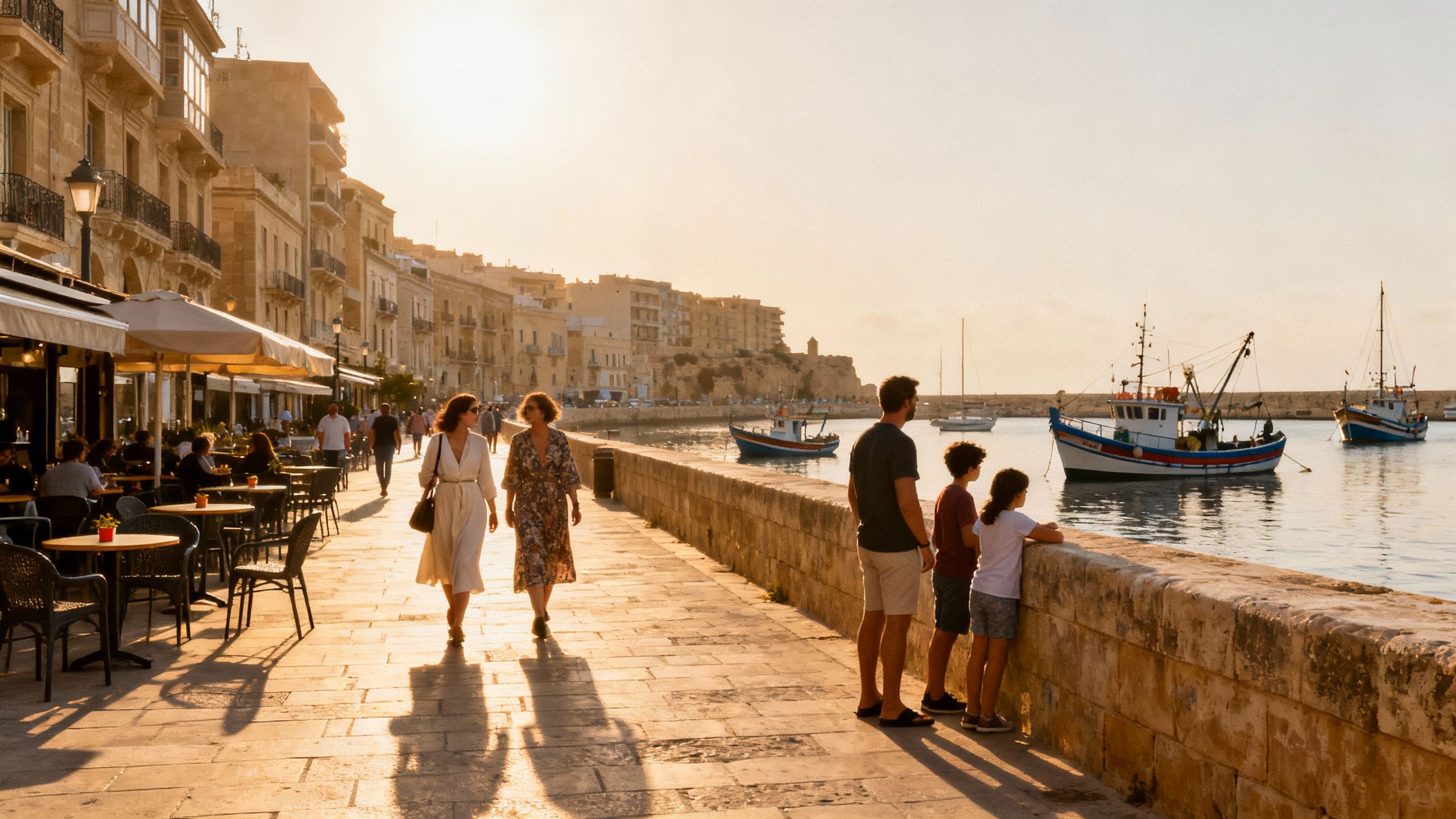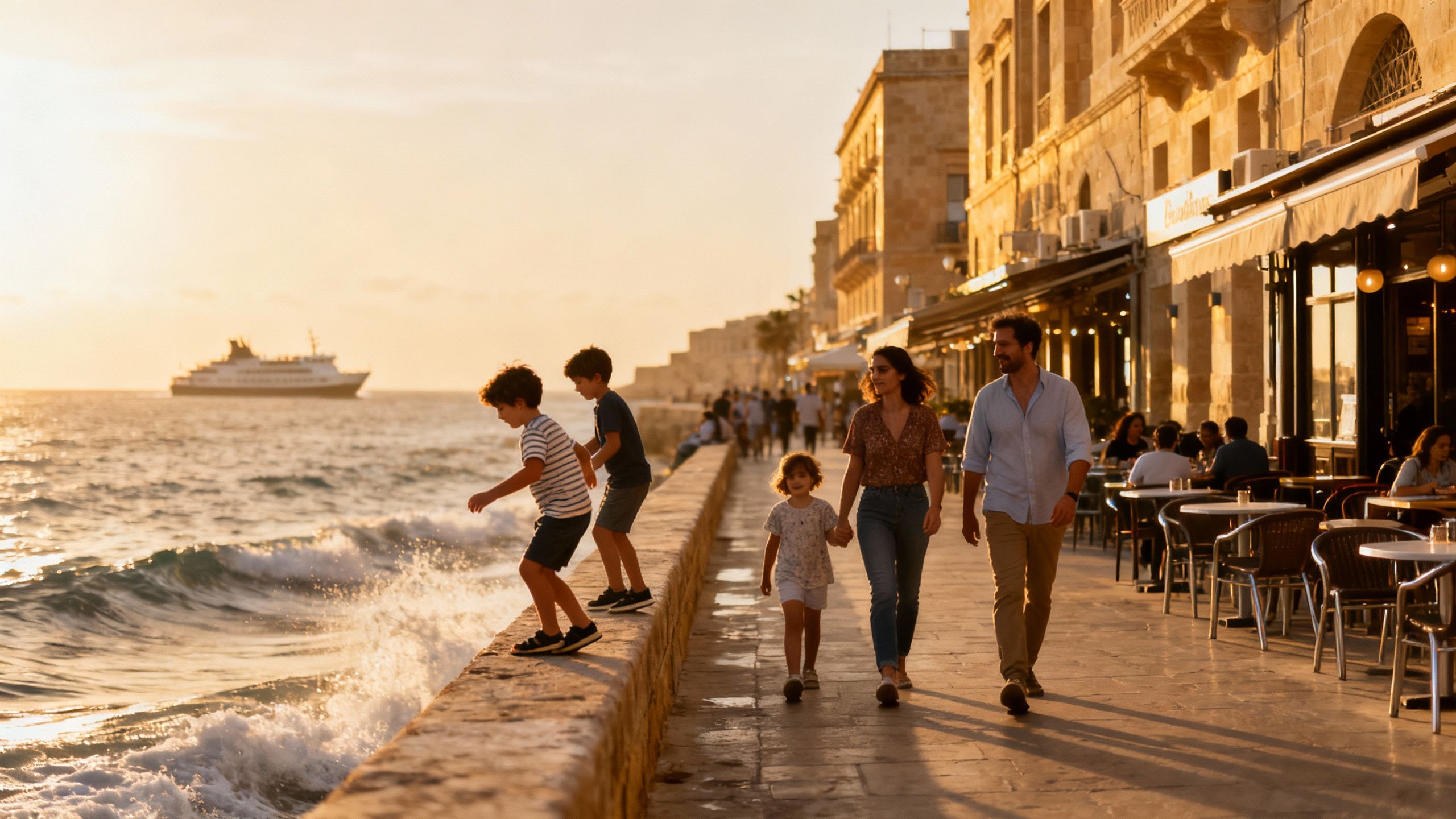Malta: Lifestyle-Led Buying Amid Rising Prices
Malta’s charm meets a brisk market: RPPI data shows steady price growth; match lifestyle priorities with property type, seasonality and stewardship for confident buying.
Imagine waking to the sound of church bells across a limestone street in Valletta, then walking to a café on Triq ir-Rebha for espresso while fishermen mend nets in the Grand Harbour. Malta compresses Mediterranean life into an island the size of a small city-state: intimate neighbourhoods, late‑evening passeggiatas, and a rhythm that alternates between centuries‑old masonry and pragmatic modernity. For the international buyer this intensity is the attraction — a house is not just a dwelling but an address that places you at the centre of a lived history. Yet beneath that romance the market is brisk: recent National Statistics Office data show continued price growth, and that shapes both opportunity and caution for anyone considering a purchase now.
Living Maltese: daily rhythms and neighbourhood character

Mornings in Sliema mean people spilling onto Strand cafés and small shops opening their shutters; by contrast, Mdina keeps a hush until tourists arrive mid‑morning and daytime is given over to slow walks beneath bastioned walls. Pace and texture vary block by block: St Julian's pulses with nightlife and international services, the Three Cities exhale maritime heritage, and seaside towns such as Marsaskala and Marsaxlokk prize the quotidian — fish, family, and sea air. Living here is tactile: limestone dust on boots, lemon trees in courtyards, and the smell of ftira from local bakeries. Those sensory details matter when choosing not only where to live but how a property will be used and appreciated year‑round.
Valletta and the waterfront: provenance and proximity
Valletta rewards those who value architectural pedigree. Townhouses and restored palazzos on streets like Republic and Merchants offer high ceilings, carved stonework and, often, small terraces with harbour views. Daily life here is theatrical: state concerts in restored auberges, galleries tucked beside family‑run cafés, and a compactness that makes walking the primary mode. From a property perspective, these central addresses carry scarcity value and maintenance obligations — restoration standards can be exacting, and living well here often means engaging proven conservation professionals.
Seaside villages: Marsaxlokk, Għajn Tuffieħa and quieter coastlines
If your life imagines morning swimming and fish markets, villages such as Marsaxlokk or the quieter coves near Għajn Tuffieħa deliver a different temperament: informal, community‑centred and slower. Streets are lower-rise, terraces and maisonettes more common, and local cafés double as social hubs. These areas are where buyers trade proximity to the capital for a measured seaside domesticity, and where property choices often prioritise outdoor terraces, natural ventilation and durable Mediterranean materials over large interior volumes.
- Espresso culture on Triq il-Kbira (Sliema); Valletta evening passeggiata on the Valletta Waterfront; Sunday fish market at Marsaxlokk; Dawn swims at Golden Bay; Artisan workshops on Strait Street.
Making the move: how lifestyle choices shape property decisions

The leap from longing to ownership begins where lifestyle priorities meet market reality. Malta’s Residential Property Price Index has risen steadily — the NSO reported a 5.2% year‑on‑year rise at the end of 2024 and continued increases into 2025 — so timing, type and location must align with both daily life and long‑term stewardship. For buyers who imagine an urban cultural life, expect premium per square metre in Valletta and Sliema; for those leaning towards outdoor, community‑centred living, maisonettes in coastal villages can offer better value but require different management considerations. Translating lifestyle into a search brief will save time and reveal which trade‑offs are acceptable.
Property types and how they fit daily life
Choose a palazzo and you choose formality: high rooms, formal circulation and restoration obligations that reward attention to craft. An apartment in Sliema offers convenience and views but often trades outdoor private space for lift access and communal management. Maisonettes and terraced houses in village centres grant courtyards and terraces — the features Maltese use daily for dining and drying laundry — but require thoughtful waterproofing and sun shading. Consider how you want to spend mornings and evenings; the property should accommodate the life rather than demand you reshape it.
Working with agencies who understand lifestyle, not just listings
Local agents are the translators of lifestyle into opportunity. An agent who knows where to find a south‑facing roof terrace for winter sun in Mdina, or a hidden garage near Sliema’s seafront, adds practical value beyond inventory. Seek firms that demonstrate experience with conservation works, local contractors and municipal procedures — these are the details that preserve both daily comfort and long‑term value. Ask for concrete examples: recent restorations they advised on, recommended craftsmen, and how they manage off‑season lettings if you intend to rent.
- Draft a lifestyle brief (rooms, terraces, preferred streets); Visit in two seasons to test daily life (summer bustle and quieter winter); Ask agencies for comparable sales and recent restoration case studies; Inspect ventilation, sun exposure and water management; Secure a local architect or conservator before offer; Agree a property‑management plan if you will be absentee.
Insider knowledge: what expats learn after six months
New arrivals quickly notice the island’s compactness: everything is closer than expected and community ties run deep. Expat groups coalesce around language schools, international cafés in Ta' Xbiex, and clubs that meet in St Julian’s; yet integration often depends on small rituals — learning basic Maltese greetings, joining a village festa committee, or sampling local produce at the Marsa market. Those who thrive adapt to seasonal swings: summer brings a busy tourist tempo and lively evenings, while winter offers quieter neighbourhood life and better negotiating power in the property market.
Cultural cues that affect everyday living
Malta prizes familial connection and public ritual. Festas animate villages through late summer with fireworks, brass bands and closed streets — events that shape traffic, parking and the popularity of terraces. Shops close more often for holidays than many newcomers expect, and building works can be scheduled around religious ceremonies. Appreciating these rhythms helps when negotiating practicalities such as restoration timelines or tenant expectations.
Long-term lifestyle: stewardship over speculation
For buyers who value lasting provenance, Malta rewards stewardship. Properties that retain original stone, timber shutters and artisan tilework hold a distinct market position; careful restoration often yields a premium that outlives short‑term market cycles. Given the island’s limited land and active price growth tracked by BIS and local statistics, consider a long horizon: maintenance and sensitive upgrades are investments in cultural and financial value alike. This mindset reframes purchase decisions from speculative turnover to custodianship.
- Choose a neighbourhood by daily mood (Valletta for culture, Sliema for services, Marsaxlokk for sea life); Prioritise ventilation and terrace orientation for year‑round comfort; Budget for conservation-grade finishes if buying historic fabric; Request recent RPPI comparables from your agent; Meet a local conservator before committing to renovation plans.
Malta’s compact pleasures are immediate: café life, seasides and festivals. The market, however, requires a tempered approach — one that pairs desire with data and stewardship with purchase. Begin with a clear lifestyle brief, consult agents who can translate that brief into concrete opportunities, and treat restoration and management as part of the acquisition cost. If you do this, you do more than buy a home; you adopt a way of life that is particular to Malta and, when cared for, enduring in both character and value.
Relocating from London to Mallorca in 2014, I guide UK buyers through cross-border investment and tax considerations. I specialise in provenance, design integrity, and long-term value.


